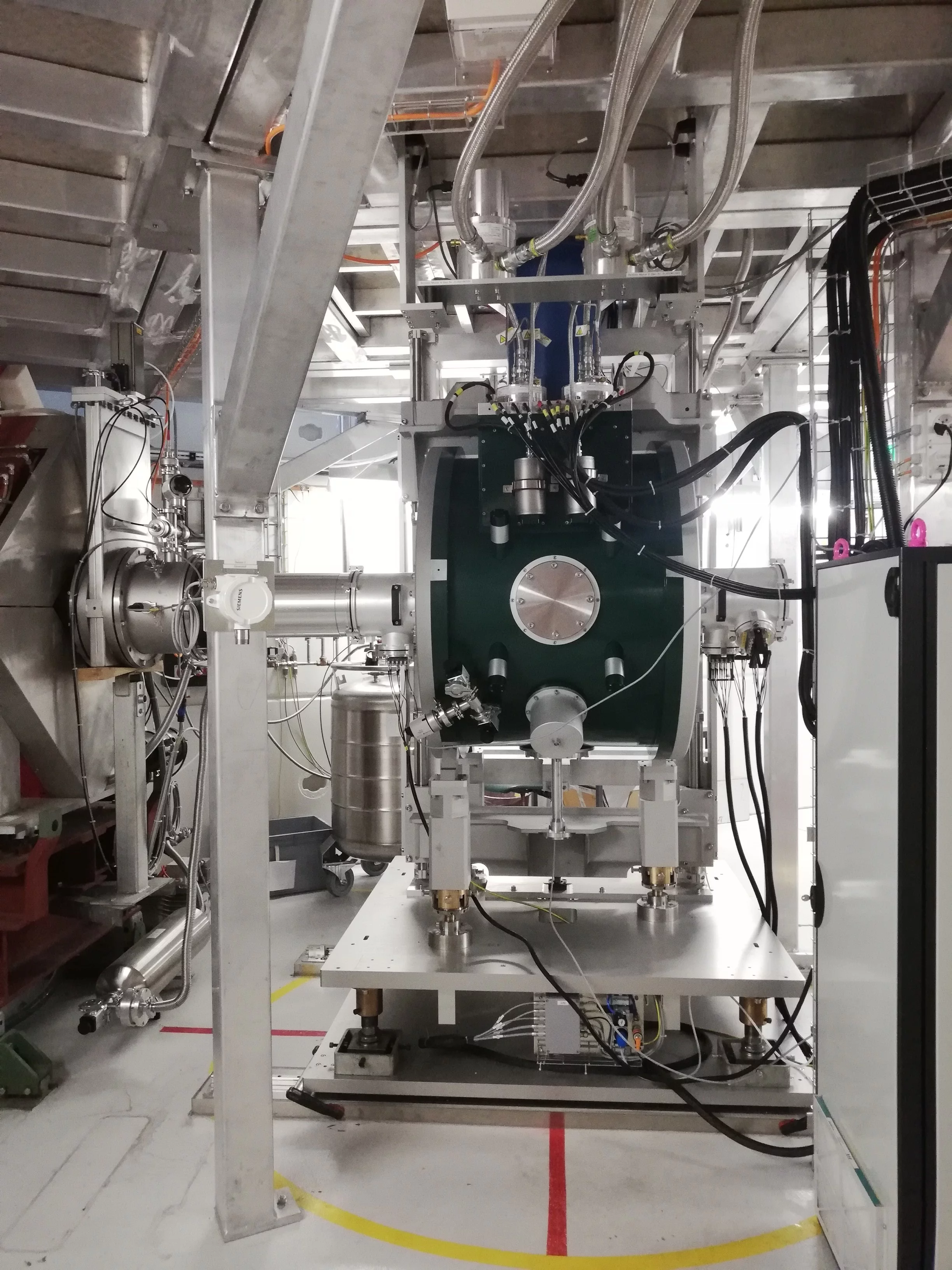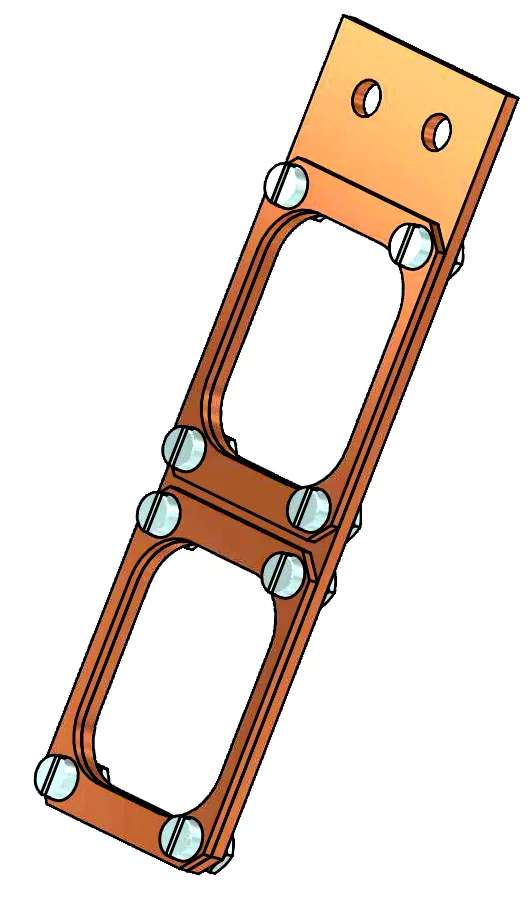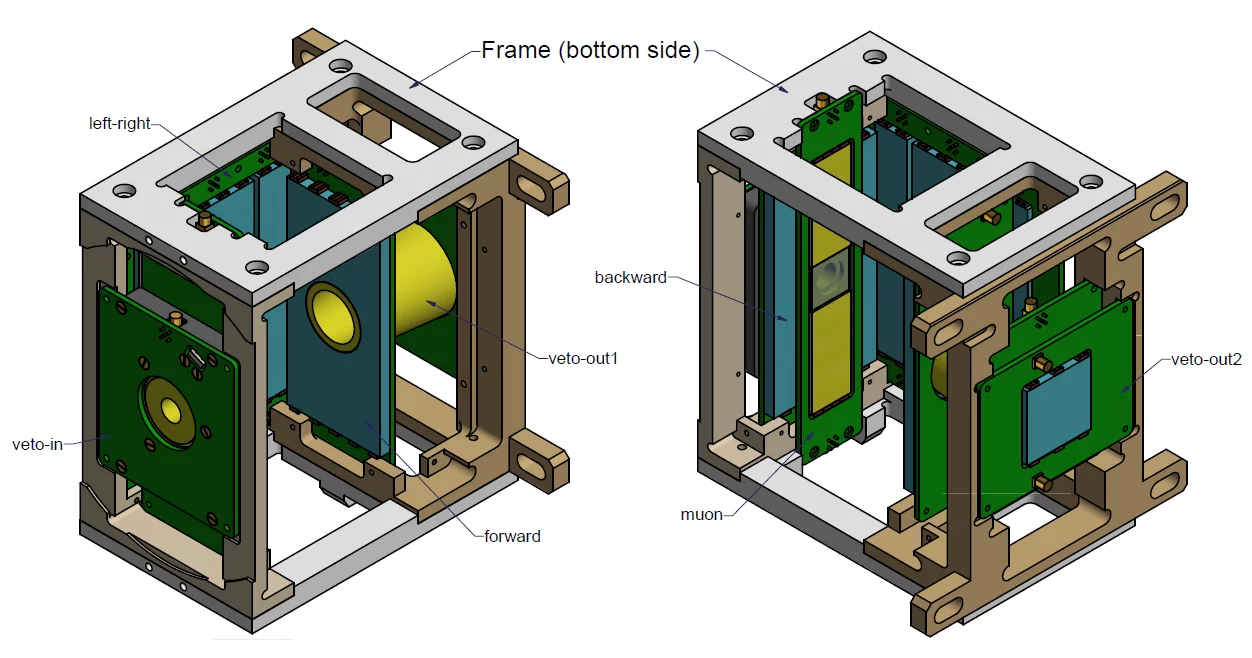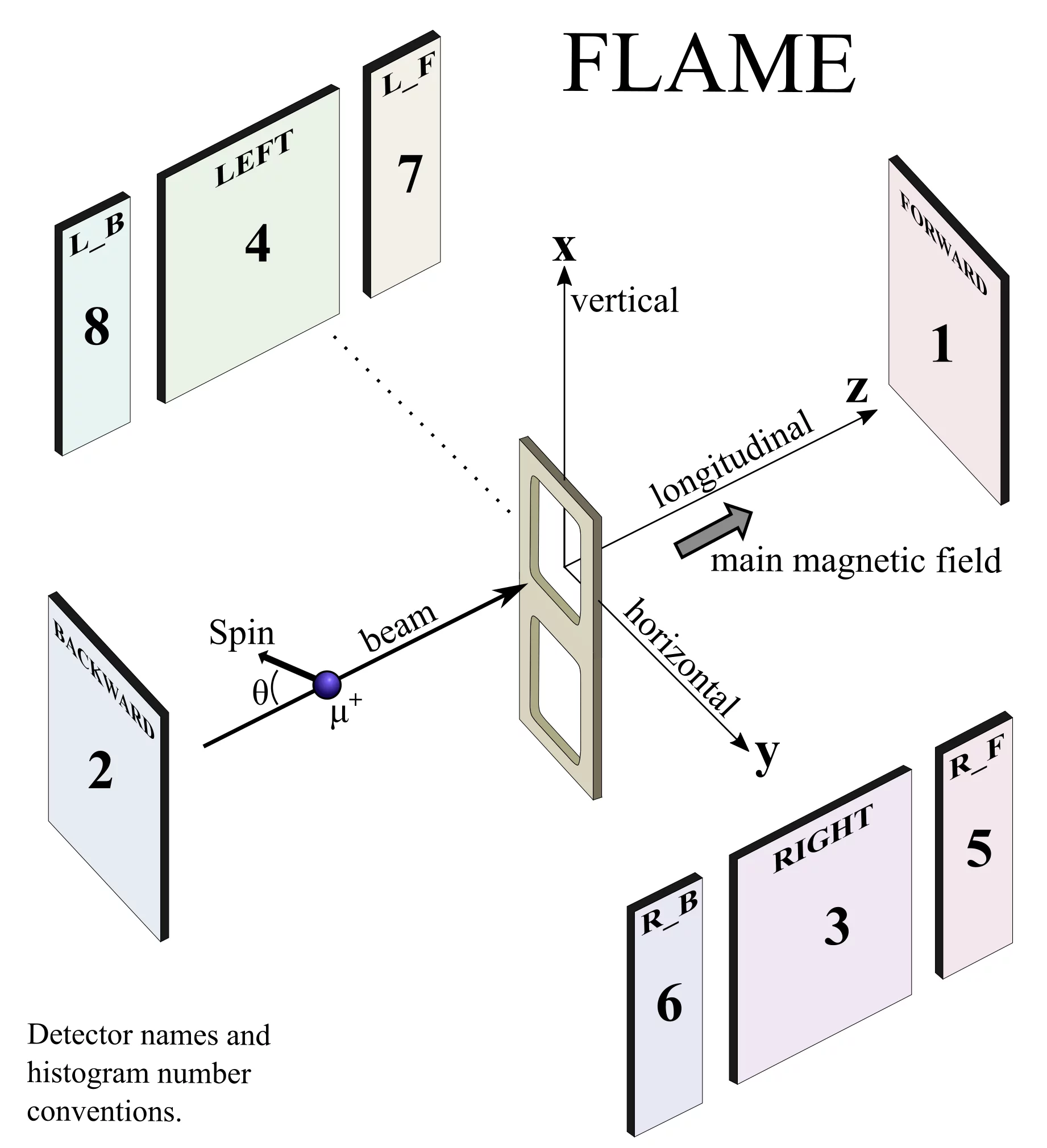General Specifications
Sample Environment
Magnetic Field
Magnetic field up to ±3.5 T can be applied along the beam by using the dry Cryogenic Ltd. superconducting magnet. Shim coils may be used to improve homogeneity of the magnetic field in the sample space which is better than 10ppm.
Three vector magnets, X (vertical, ±200G), Y (horizontal, ±100G), and Z (longitudinal, ±100G) can be used to adjust for true zero field conditions better than 50 mG. They also be used for weak longitudinal and transverse µSR as well as alpha calibration.
Cryostat
The experiment is equipped with a Oxford Instruments Variox cryostat and a KelvinoxJT dilution fridge insert.
Variox with sample stick
Temperature range: ~ 1.8 K < T < 300 K
Variox with the KelvinoxJT dilution fridge insert
Temperature ranges:
~ 30 mK < T < 2.5 K with circulating mixture with a weak link
~ 1.8 K < T < 100 K passively using KelvinoxJT as a sample stick inside Variox
Detectors and Logic
Data Acquisition
The acquisition software DeltaT (html / pdf) is based entirely on the DAQ software package MIDAS.
Computers
The µSR data acquisition system hardware consists of a frontend PC running Scientific Linux and controlling the VME DAQ unit which is located in the GPS counting room and a Linux back-end server (psw422) located in the central computing center at PSI.
There are several PCs in the FLAME counting room for instrument control and data analysis. The area is equipped with a Linux PC for instrument control as well as with two Windows PCs which run the dedicated operation software for the KelvinoxJT dilution fridge and the superconducting magnet.
- DAQ server: psw422, midas access through http://psw422.psi.ch:8083 (PSI intranet only).
- client pc12016, Linux RHEL8 64-bit, for experiment control
- client pc13372, Linux RHEL8 64-bit, for online data analysis
Printer
- WEHA_PIM3_1 in the FLAME counting room
Data format, storage and analysis
The histogram files are saved in the MusrRoot format, see Software and Data storage for more information.
On the Linux client PCs histogram files are accessible on:
- /afs/psi.ch/project/bulkmusr/data/flame/dYYYY
where YYYY is the year of the experiment
Files can be retrieved via the discovery.psi.ch data catalog and via the database on musruser.psi.ch .
For fitting of the µSR data the program musrfit is used. This package also contains a conversation tool called any2many to convert between different µSR file formats.
The documentation of musrfit is available here.
Project Description
User Office
Provides all information about user research at PSI Large Research Facilities
PSI User Facilities Newsletter
Current News from PSI photon, neutron and muon user facilities
MuonSources.org
MuonSources.org provides information about muon facilities and muon research worldwide.ISMS
The International Society for µSR Spectroscopy (ISMS).



